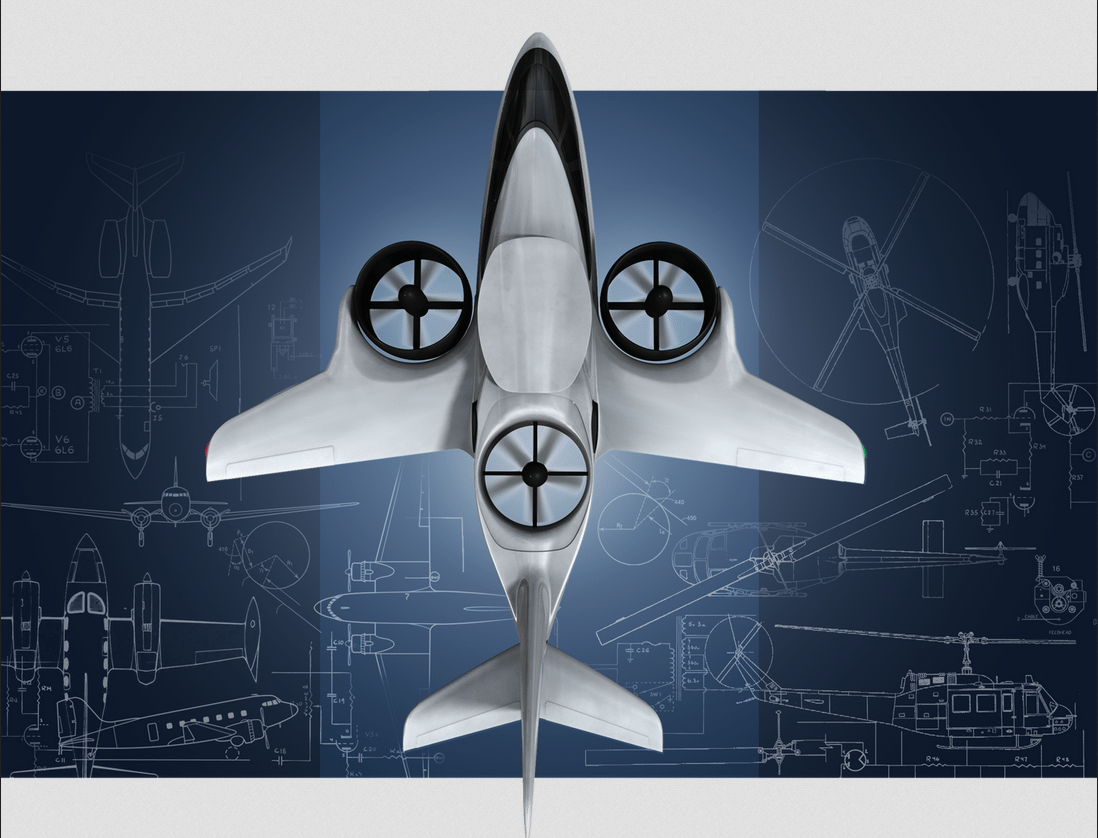[Avionics Today 11-20-2015] The XTI Aircraft Company has set out to revolutionize aircraft development, and not just in the usual way. The company is moving forward in its bid to raise funds to develop an aircraft with Vertical Take-Off and Landing (VOTL) capabilities through a source you usually see on your Facebook feed: crowdfunding.
 |
| The XTI Aircraft Company’s TriFan 600 design. Photo: XTI Aircraft Company |
XTI Aircraft recently filed with the U.S. Securities and Exchange Commission (SEC) to convert nearly $14 million in expressed interest from crowdsourcing into real investments to develop its TriFan 600 aircraft — a six-seat fixed-wing airplane with the speed and range of a business jet, and the ability to take off and land like a helicopter. The company launched its “test-the-waters” equity crowdfunding campaign aimed at sourcing capital from non-accredited investors in exchange for shares in the company in August in an effort to fund the TriFan 600.
In addition to gathering investments from more traditional platforms such as high-net-worth individuals, private equity, hedge funds, commercial banks, and Original Equipment Manufacturers (OEMs), XTI decided to launch the crowdsourcing campaign as a result of a recently approved regulation by the SEC enabling such investments. In June 2015, the final Regulation A+ rules under Title IV of the JOBS Act became effective, paving the way for companies such as XTI to raise up to $50 million from both accredited and unaccredited investors.
The company is in the “testing-the-waters” phase of Regulation A+, which allows them to promote a potential offering in order to see how much interest they receive before they decide to submit materials to the SEC. Having raised $14 million, the company filed in early November to convert the shares to real investments.
While XTI has seen a relative amount of expressed interest — both in terms of capital and buzz — from the new source, Jeffrey Pino, vice chairman of the XTI Aircraft Company, told Avionics Magazine that the newness garners a certain amount of uncertainty.
“The challenge is that there is no history on this. You don’t know if the “test-the-waters” funding is going to come out to 30 percent or 70 percent [of the promised amount], so it is hard to know exactly what that pot of money is going to look like when you’re done,” said Pino, who is also the former president and chief executive of Sikorsky Aircraft.
While crowdsourcing has created a certain amount of uncertainty, it has also earned the program a large amount of attention for the aircraft. And while the attention may not serve as marketing for an aircraft that is projected to cost around $10 to $12 million when it comes onto the market, it serves to “create a conversation” around the technology and help pull funding from other areas of investment as well.
“Crowdsourcing has created huge interest … which helps spread the word. We find as we are going to those other [funding] sources that they are kind of cocking their heads on this crowdfunding and seeing that there is real interest in this program,” said Pino.
Pino also noted that crowdfunding is a great way to source an unusual or new design as the “crowdfunding source is extremely interested in innovation.” The company’s design for its TriFan 600 aircraft is interesting to say the least. According to Pino, the aircraft will have two fans, three on the wings and one in the body, which will provide vertical lift to the aircraft as is seen with rotorcraft. Once in the air, the aircraft will begin to translate to forward flight and the two fans on the wings will rotate forward while a shell door cover the middle fan eliminating drag. The two wing fans, take the aircraft up to 35,000-plus feet and nearly 400 mph, according to Pino. To enable the transition form lift-van vertical lift and transfer it to the wings, the company will be looking to use fly-by-wire and flight control logic effectively. But these are not original technologies by any means.
“The technology that we have come up with is patience, because, while we are a revolutionary design, all of the individual components have been maturing over the last 20 years. Those components are: lift-fan technology, fly-by-wire, lightweight composite structures and powerful, compact and fuel-efficient engines. What we have done is harnessed all those technologies and put them all together into a new configuration,” said Pino.
In this way the company is also being patient when it comes to assigning avionic systems to the aircraft. XTI is looking to allow the vehicle to mature and get into the avionics development cycle at the latest time possible.
“One of the things I have found through my career is that the cycle to develop an aircraft from start to finish is about three to four times as long as it is to develop a new technology in the avionics world. Quite frankly, we are going to hold space weight and power for avionics, but we are going to hold out on choosing an avionics supplier for our final product in years because everything they are producing today, in five years there’s going to be a better mouse trap,” said Pino.
XTI will require capital in the way of low hundreds of millions of dollars to move the aircraft through certification, according to Pino. And while he could not specify how much the company has earned toward the endeavor thus far, he believes it has gathered enough to move forward.
“We are not really allowed to talk about other investment at this point because that changes our valuation, so at this point we have to be a little bit quiet, but we are talking to all those other sources for funding. In aviation, because of the safety and the stringent requirements, this is an extensive proposition, but the crowdfunding will clearly get us going,” said Pino.